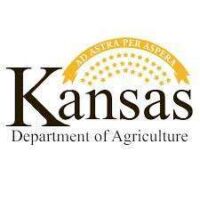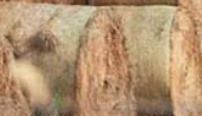Today’s News from the University of Kansas
Headlines
From the Office of Public Affairs | http://www.news.ku.edu
Burning for freedom: The migrants ‘Living Tangier’
LAWRENCE – In a new book, “Living Tangier: Migration, Race and Illegality in a Moroccan City,” a University of Kansas professor of anthropology takes readers inside the world of the “harraga,” or burners, who make their way from North and West African hinterlands to the port, hoping to hitch a ride to Spain and then perhaps to life in Italy.
Fall 2020 Architectural Lecture Series focusing on design responses to COVID-19 crisis
LAWRENCE — For fall 2020, the School of Architecture & Design’s Architecture Lecture Series curators teamed with the school’s Institute for Health + Wellness Design to create a series of “Grand Rounds” lectures that will address health care design during and after the current COVID-19 health crisis. The series begins at noon Thursday, Sept. 10, with “COVID/Care/Community.”
Full stories below.
————————————————————————
Contact: Rick Hellman, KU News Service, 785-864-8852, [email protected], @RickHellman
Burning for freedom: The migrants ‘Living Tangier’
LAWRENCE – Do you realize that people are willing to cling to the hulls of ships, floating on wooden planks across the Mediterranean, for the dream of a free life in Europe?
Abdelmajid Hannoum has met them as they loiter around the port in Tangier, Morocco, and he has watched as they set out on their perilous journey. They call it “burning,” as in burning bridges, or risking, with the obvious implications, even if they manage to book passage inside a ship.
In his new book, “Living Tangier: Migration, Race and Illegality in a Moroccan City,” (University of Pennsylvania Press, 2020) the University of Kansas professor of anthropology takes readers inside the world of the “harraga,” or burners, who make their way from North and West African hinterlands to the port, hoping to hitch a ride to Spain and then perhaps to life in Italy.
For the harraga, survival then in Europe is a bridge they’ll cross when they get there, Hannoum said.
It’s not even, or only, the privation of their native lands that drives the burners onward, according to the KU researcher.
“Crossing is an exercise of freedom,” Hannoum wrote. “Hence their motto ‘rabha walla dabha’ (make it or die).”
It is a new type of migration that only the youths undertake with determination so that they can reinvent their lives in Europe.
In “Living Tangier,” Hannoum questions various systems of legality facing the burners. Of course, for the European Union, their trek is illegal. But in the face of a survival imperative, the legal and practical barriers that various nations erect before them pale in comparison, he said.
“Among all those West African (and Moroccan) migrants I encountered and those I interviewed, illegality is not a concept to be believed,” he wrote.
Hannoum is a native of Morocco, though not Tangier, and he left to attend the Sorbonne in 1985. He has been at KU since 2006 and is also affiliated with its Center for Global & International Studies, African Studies Center and Department of African and African-American Studies.
And while Tangier still attracts Western tourists looking for the place made famous in European and American literature by 20th-century writers like William Burroughs, Jean Genet, Tennessee Williams and Jane and Paul Bowles, Hannoum’s “Living Tangier” is far more of a hub for migration than it was in Burroughs’ day. Since the 1990s, there has grown up a community of West African burners who must first make their perilous way across the desert before arriving on the coast, where they stay for an indeterminate time, often crossing back and forth several times. Often, they also get stuck in Morocco. And now, too, there are more white Europeans, who move to Morocco for a more affordable lifestyle. Even though they live in Morocco, they form a community separate from the rest of society, as Hannoum details in the book from an in-depth perspective of years spent researching the phenomenon.
“It became more visible than it used to be, that society thinks in racial terms, especially in terms of Black — associated with Africa — and white — associated with Europe,” Hannoum said. He contrasted that with the atmosphere he experienced growing up in Morocco “with a variety of people of different skin color, and that did not seem important in society then. Society seemed to be indifferent to race. But I argue that race was only invisible but still important in a formerly colonized society and that racial thinking was brought to it by colonial modernity. One of the important consequences of the new sub-Saharan migration is that it forced society to face the question of race.”
———————————————————————–
The official university Twitter account has changed to @UnivOfKansas.
Refollow @KUNews for KU News Service stories, discoveries and experts.
————————————————————————
Contact: Dan Rolf, School of Architecture & Design, 785-864-3027, [email protected], @ArcD_KU
Fall 2020 Architectural Lecture Series focusing on design responses to COVID-19 crisis
LAWRENCE — For fall 2020, the School of Architecture & Design’s Architecture Lecture Series curators teamed with the school’s Institute for Health + Wellness Design to create a series of “Grand Rounds” lectures that will address health care design during and after the current COVID-19 health crisis.
“Amid the pandemic, this timely lecture series brings academic and industry leaders currently navigating the technological, social and environmental factors that are forever changing architectural research and practice,” said Keith Van de Riet, associate professor of architecture and one of the lecture series curators.
All events take place at noon the second Thursday of the month via Zoom. The lecture series is as follows:
Sept. 10 | “COVID/Care/Community”
How can architecture support responses to the current COVID-19 pandemic and other crises caused by natural and manmade disasters? This panel discussion will address the public health characteristics of the current COVID-19 event, how the architecture community is responding to support communitywide initiatives, specific health care building strategies and post-event disaster recovery efforts.
Speakers:
- Rachel Minnery, FAIA, senior director of Resilience, Adaptation & Disaster Assistance at the American Institute of Architects (AIA)
- Molly Scanlon, Ph.D., FAIA, FACHA, director of Standards, Compliance & Research at Phigenics, AIA COVID-19 Task Force member
- David Vincent, AIA, ACHA, LEED AP, principal and director of health at HKS Architects.
Oct. 8 | “Understanding Virtual Reality in Design and Research”
Virtual reality (VR) software is emerging as an important tool in creative design and for communications with users and clients. This session will explore the current state of the technology and how it can fit into the overall design process. Research into the effectiveness of this tool compared to other methods for client input will be presented along with insights into the future of VR.
Speakers:
- Callum Vierthaler, AIA, EDAC, LEED, architect at Pulse Design Group
- Deborah Wingler, Ph.D., EDAC, health research lead, vice president at HKS Architects
Nov. 12 | “The Future of Architecture”
Current restrictions on travel, group meetings and office work environments have resulted in radical shifts in the practice of architecture. Are these permanent changes in the way we work, are they temporary “blips” in the design process, or will there be some blend in virtual and traditional practice? This panel will explore the short- and long-term implications from an industrywide perspective and from practitioners leading large- and medium-size firms.
Speakers:
- Phillip Bernstein, FAIA, NOMA, LEED AP, associate dean and professor adjunct at the Yale School of Architecture
- Heather Chung, MDA, vice president and Healthcare Studio Leader at SmithGroup
- Richard Embers, AIA, ACHA, principal at Pulse Design Group
Each semester, the Architecture Lecture Series welcomes architecture and experiential design leaders from around the country to the School of Architecture & Design. Lecturers bring a wide range of expertise in areas such as sustainable building, digital environments, public interest design, historic preservation, health and wellness design, and more.
———————————————————————-
KU News Service
1450 Jayhawk Blvd.
Lawrence KS 66045
Phone: 785-864-3256
Fax: 785-864-3339
Erinn Barcomb-Peterson, director of news and media relations, [email protected]
Today’s News is a free service from the Office of Public Affairs



